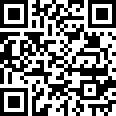See also: Abdominal pain Ddx
Pathophysiology
Premature activation of pancreatic enzymes causing autodigestion of the pancreas.
Release of lipolytic enzymes from the pancreas causes significant inflammation of the peritoneum.
Etiology
Most common causes are
1. Alcohol*
2. Gallstones* *the two most common causes of acute pancreatitis
Obstruction of pancreatic duct or common bile duct
Hypertriglyceridemia
Crops of yellow-red papules are descriptive of eruptive xanthomas suggesting this etiology
Serum triglyceride level generally must be >1000 mg/dL to be considered a potential cause of pancreatitis
Hypercalcemia
Direct toxic effects of certain medications, generally not meds with abuse potential
Infections
Mumps
Hepatitis B
HIV
Coxsackievirus
CMV
HSV
Recent ERCP
Trauma
Idiopathic factors
Hx
Recent binge drinking
Sx
Acute midepigastric pain radiating to the back
Pain may improve when leaning forward
Pain is usually constant and severe
Half experience generalized distribution of pain resulting from diffuse area of inflammation due to no organ capsule
Anorexia
Fever
Nausea
Vomiting
Agitation
Leukocytosis
Labs
High lipase (highly sensitive and specific)
High amylase
Pleural fluid amylase elevated
Hypocalcemia 2/2 saponification
PE
Epigastric tenderness
Abdominal distension
Flank ecchymoses from hemorrhagic pancreatitis (Grey-Turner’s sign)
Workup
Rectal exam
CBC, electrolytes, BUN/Cr, amylase, lipase, AST/ALT/bilirubin/ALP
Imaging
The role of imaging in pancreatitis guides treatment in four possible ways:
1. By confirming the diagnosis when the presentation or laboratory values are confusing.
2. By detecting gallstones as a possible cause.
3. By detecting pancreatic necrosis, pancreatic abscess, or other complications of the disease.
4. By guiding percutaneous drainage, if needed.
US-RUQ +/- abdomen
Biliary obstruction is identifiable by both ultrasound and CT
Indicated to look for gallstones and common bile duct dilatation.
The preferred imaging modality because it provides the most accurate information regarding the presence of absence of gallstones.
RUQ U/S is more sensitive than CT scan in demonstrating gallstones.
If the U/S is nondiagnostic or difficult to interpret and there high high clinical suspicion for common bile duct disease, and endoscopic ultrasound may be done to better visualize the gallbladder and biliary tree.
Distal tract stones may be missed.
An impacted stone is unlikely to give a normal alkaline phosphatase or bilirubin level.
A negative ultrasound does not rule out tiny stones or “sand” as a cause for pancreatitis, however, and repeated episodes of iodiopathic pancreatitis would be an indication for ERCP.
CT abdomen and pelvis with IV and oral contrast
CT allows for diagnosis of pancreatic necrosis and peripancreatic fluid collections or pseudocystfindings that require surgical evaluation
The use of CT in a patient with uncomplicated acute pancreatitis is limited, and the test does carry some risk with the need to take oral and IV contrast as well as the exposure to radiation. CT use in acute pancreatitis should be reserved for patients who are in severe shock, who do not respond to standard therapy, or who appear to be septic with concern for a pancreatic abscess or necrotic pancreatitis.
CT is not necessary to make the diagnosis of acute pancreatitis.
Most helpful for the identification of the presence, severity, and complications of pancreatitis (such as hemorrhage or necrotizing pancreatitis). Patients with pancreatitis who fail to improve with conservative treatment should undergo abdominal CT scan to identify areas of infection or necrosis. CT scan is not as sensitive as U/S at detecting gallstones since many stones have bile and are isodense and would not be seen on CT scan.
Endoscopic Retrograde Cholangiopancreatography (ERCP)
Indicated if there is evidence of an impacted gallstone on the other imaging studies. It is not commonly available in the ER setting and requires a GI or surgery consult.
Drainage of an obstructed bile duct with ERCP provides rapid relief of symptoms and improved outcomes in obstructive forms of pancreatitis, but carries a risk of complications including bleeding, perforated bowel, worsening pancreatitis, or even death. If the test is performed in a patient who clearly had non-obstructive pancreatitis (e.g. alcoholic) that was already improving, the risk definitely outweighs the benefit.
Upper endoscopy
X-rays
Acute abdominal series (plain x-rays)--Not indicated in uncomplicated acute pancreatitis.
Unilateral, left-sided pleural effusion with high amylase concentration
EKG
Dx
There is no one pathognomonic finding for acute pancreatitis, as a result, it is necessary for biochemical, radiologic, and, rarely histologic confirmation.
Tx
All patients with acute pancreatitis require admission for IV rehydration and pain management
Antibiotic therapy
In cases of increasing severity of illness, organ dysfunction, and worsening pancreatic necrosis, some studies have shown benefit with prophylactic antibiotic therapy, and some have not.
Empiric (not prophylactic) antibiotic therapy should definitely be used in patients who appear to have infection complicating a severe pancreatitis course, such as infected pseudocyst or pancreatic abscess complicating extensive pancreatic necrosis.
